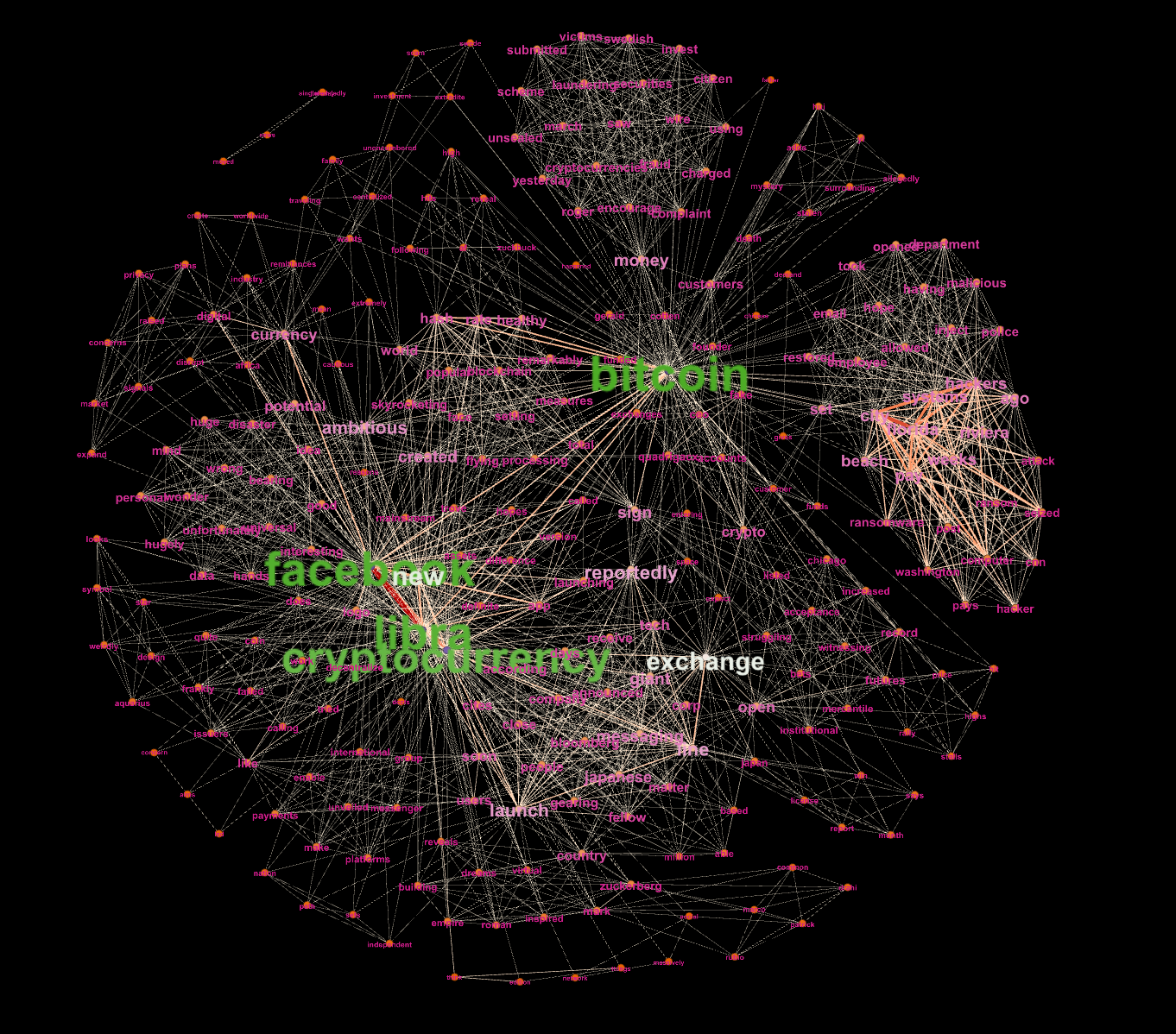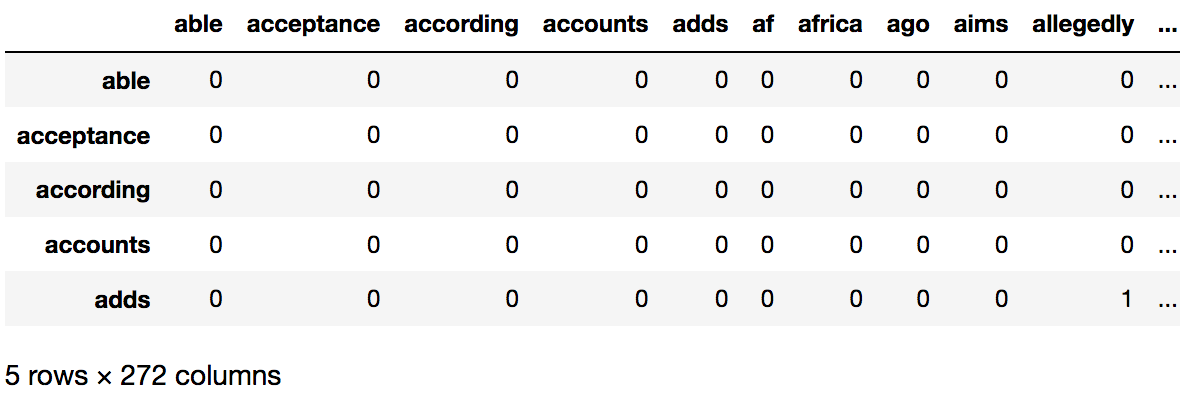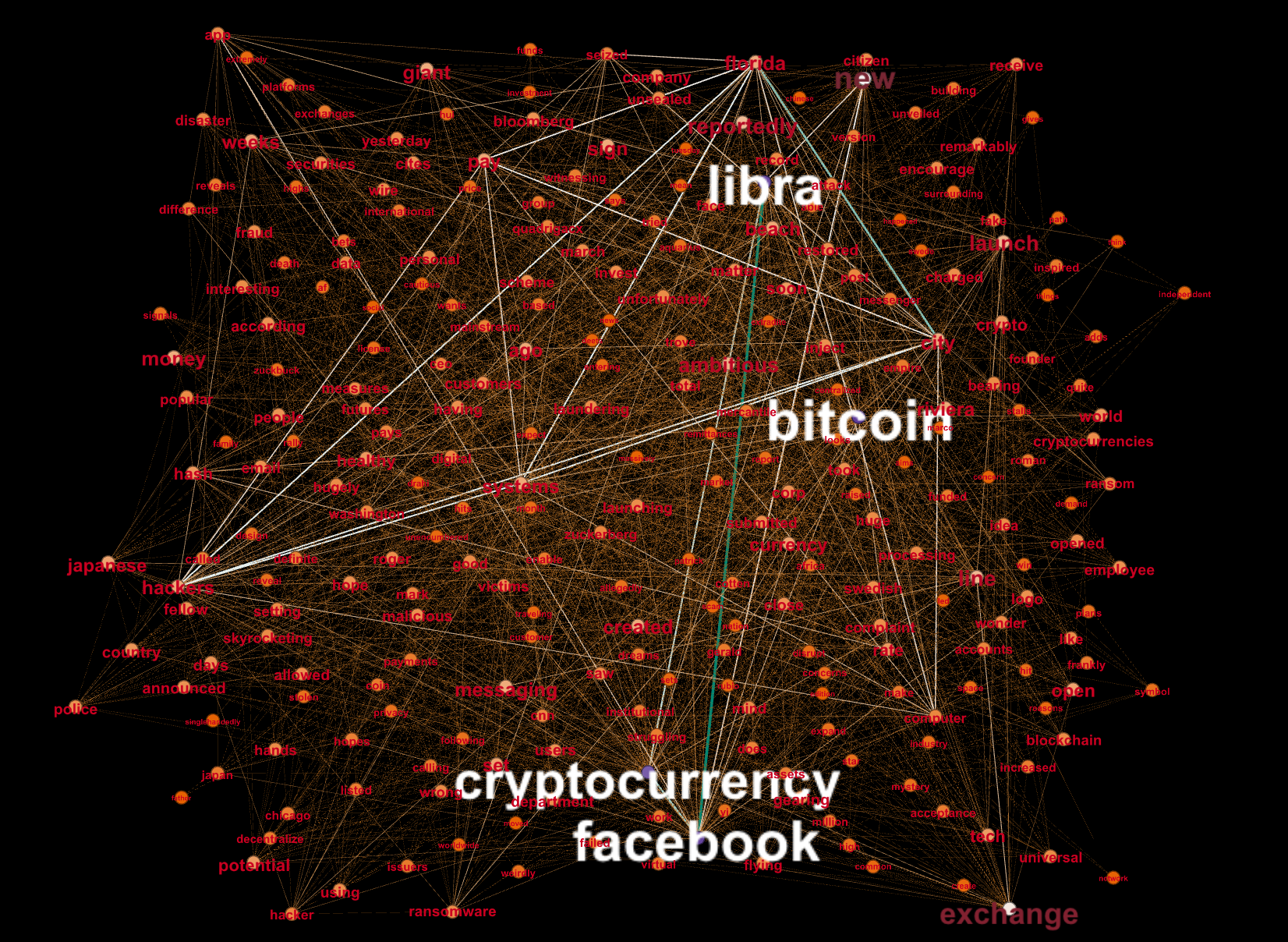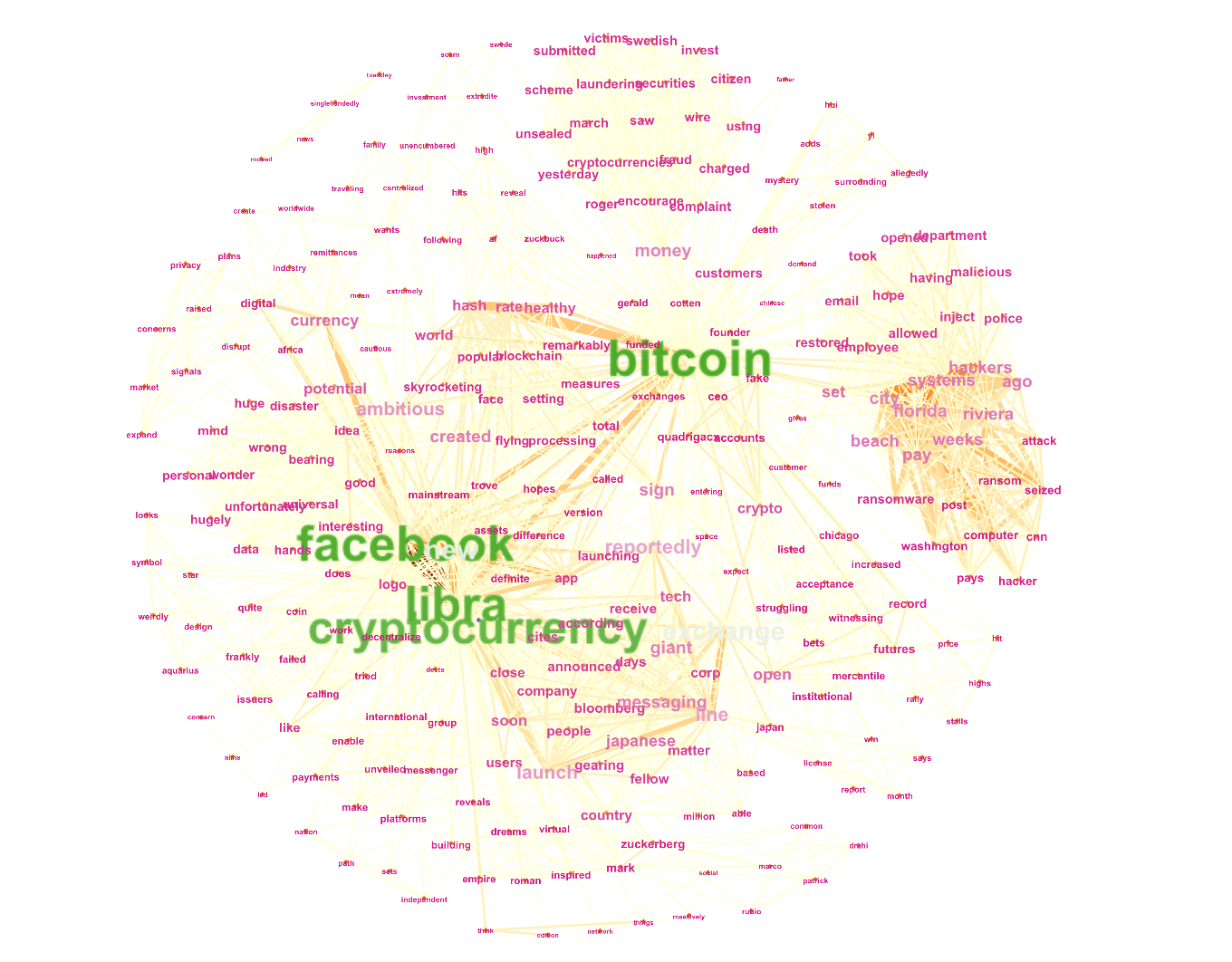Word Co-occurrence Matrix Implementation and Visualization

Word Co-occurance Matrix in Python and Network Visualization in Gelphi
Co-occurrence matrices analyze text in context. Word embeddings and vector semantics are ways to understand words in their context, namely the semantics analysis in NLP (compare to syntax analysis such as language modeling using ngram, Part-of-Speech (POS) taggings, Named Entity Recognition (NER)).
Word embeddings and vector semantics
Thesaurus-based meaning has problems:
thesaurus for every language
time evolves and meaning changes
problems with recall: missing words, works less well for v,adv
Sparse vector representations
-
Mutual-information weighted word co-occurrence matrices
- Term-document matrix
- Term-term matrix (word-word co-occurrence matrix / word-context matrix)
First-order co-occurrence (syntagmatic association):
• They are typically nearby each other.
• wrote is a first-order associate of book or poem.
Second-order co-occurrence (paradigmatic association):
• They have similar neighbors.
• wrote is a second- order associate of words like said or remarked.
Dense vector representations
- Singular value decomposition (and Latent Semantic Analysis)
- Neural-network-inspired models (skip-grams, CBOW)
- ELMo and BERT
- Brown clusters
We’ll focus on implementing the word-word co-occurrence matrix in Python and do the visualization of word’s network in Gelphi.
Fetch Data
The data we’ll be using is from a news API:
https://newsapi.org/
1
2
3
4
5
6
7
8
9
10
import requests
url = ('https://newsapi.org/v2/everything?'
'q=bitcoin&'
'from=2019-06-20&'
'sortBy=popularity&'
'language=en&'
'apiKey=[YOUR API KEY]')
response = requests.get(url)
json = response.json()
There are 20 news articles fetched in today.
Number of Articles Fetched: 20
'Florida city gives in to $600,000 bitcoin ransomware demand',
'Florida city will pay hackers $600,000 to get its computer systems back - The Washington Post',
'US wants to extradite Swede over $11M Bitcoin investment scam',
'Bitcoin healthy AF following Zuckbuck reveal, hash rate hits all-time high',
'Messaging app Line is reportedly launching a cryptocurrency exchange in Japan soon',
'Facebook’s logo drama is a problem and for more reasons than you think',
'Here Are All The Deets On Facebook’s New Cryptocurrency, Libra',
'Facebook’s logo drama is a problem and for more reasons than you think',
'Florida city agrees to pay hackers $600,000 in bitcoin to get its computer files back',
'This father of three put everything into bitcoin. Here’s what happened next.',
"Libra: four reasons to be extremely cautious about Facebook's new currency",
'What does Facebook’s Libra currency mean for Africa?',
'With Cryptocurrency Launch, Facebook Sets Its Path Toward Becoming an Independent Nation',
'What Do Mark Zuckerberg, Marco Rubio, and Patrick Drahi Have in Common?',
'Florida City Ransom Payment Could Open Door to More Attacks',
'Facebook cryptocurrency: what it aims to be, why it has led to concern',
'Post-Ransomware Attack, Florida City Pays $600K',
'Facebook’s New Libra Digital Currency, Trust Issues (Many), and Sovereignty',
"Libra: An Interesting Idea, If Only Facebook Weren'tInvolved",
"Facebook's Libra Needs To Answer Three Questions"Preprocessing
1
2
3
4
5
6
7
8
9
10
11
12
13
14
15
16
17
18
def preprocessing(corpus):
# initialize
clean_text = []
for row in corpus:
# tokenize
tokens = nltk.tokenize.word_tokenize(row)
# lowercase
tokens = [token.lower() for token in tokens]
# isword
tokens = [token for token in tokens if token.isalpha()]
clean_sentence = ''
clean_sentence = ' '.join(token for token in tokens)
clean_text.append(clean_sentence)
return clean_text
all_text = preprocessing(all_text);
Count Vector Representation
We’ll use the CountVectorizer in sklearn.
1
2
3
4
5
6
7
8
# sklearn countvectorizer
from sklearn.feature_extraction.text import CountVectorizer
# Convert a collection of text documents to a matrix of token counts
cv = CountVectorizer(ngram_range=(1,1), stop_words = 'english')
# matrix of token counts
X = cv.fit_transform(all_text)
Xc = (X.T * X) # matrix manipulation
Xc.setdiag(0) # set the diagonals to be zeroes as it's pointless to be 1
Convert into matrix table
1
2
3
4
import pandas as pd
names = cv.get_feature_names() # This are the entity names (i.e. keywords)
df = pd.DataFrame(data = Xc.toarray(), columns = names, index = names)
df.to_csv('to gephi.csv', sep = ',')
Quick look at the matrix table

Visualization
Visualization of the co-occurrence matrix network is done by using Gelphi, a open-source software to visualize network.

Drawing layout: Fruchterman Reingold (Force-directed graph drawing)

Seems like the Libra is the hottest topic of cryptocurrency on 06/20 today!